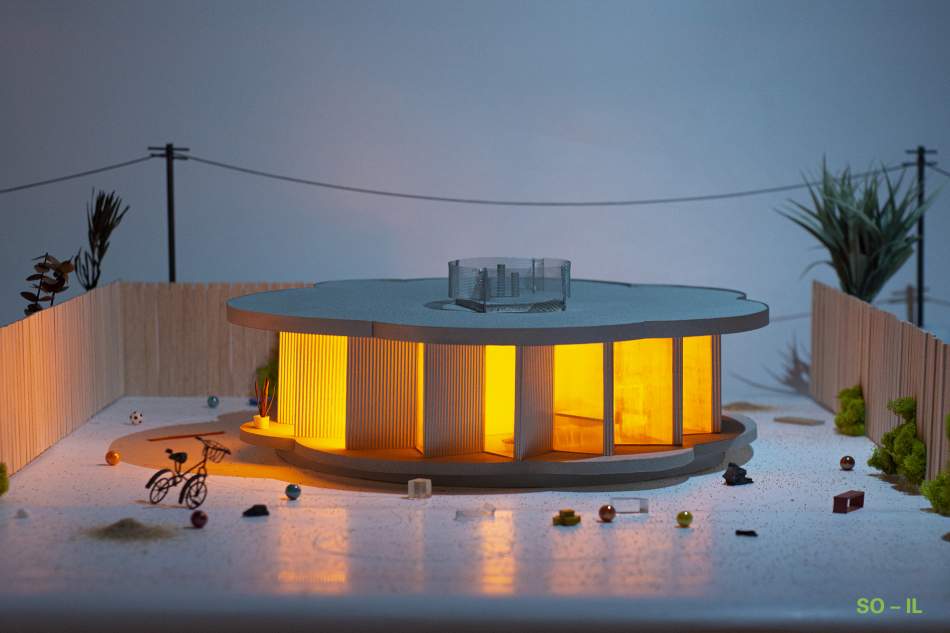A program launched earlier this year in the City of Los Angeles aims to reduce the plan-check review period for accessory dwelling units (ADUs) from as long as six weeks to as little as one day. Los Angeles County, as part of a pending update to its general plan, is looking now looking to follow suit.
"Currently, there are several remaining barriers that continue to limit the potential of ADUs in the County, including cost of construction, zoning and building permitting, and other factors," reads a motion introduced by Board Chair Hilda Solis. "In order to expedite construction of ADUs, while adhering to appropriate zoning and building codes, the County should explore options including the creation of pre-approved template building plans for ADUs and provide these plans free of charge to the public."
 Exterior view of "Pebblehouse,” an City of Los Angeles ADU Standard Plan design by SO - IL.SO-IL
Exterior view of "Pebblehouse,” an City of Los Angeles ADU Standard Plan design by SO - IL.SO-IL
The motion, which was approved yesterday by the County's Board of Supervisors, Board Chair Hilda Solis has directed the Department of Regional Planning to develop an implementation program to increase the production of ADUs in unincorporated communities. A report back, which is expected sometime in the next 120 days, would include any funding requirements to create template ADU plans, using standard plan programs in the City of Los Angeles and San Diego County as examples.
Additionally the motion requests that the County's Chief Executive Office study the possibility of waiving fees associated with ADU entitlement and permitting fees for lower-income homeowners through 2022.
The County program offering standard ADU plans to the public for free is different than the approach taken by the City of Los Angeles, which allows applicants to select from a menu of pre-approved design options from companies specializing in ADU construction. Nonetheless, ADUS - sometimes called "granny flats" or "casitas," have been a rare bright spot for housing production in Los Angeles. According to the Los Angeles Department of City Planning, ADUs now account for 22 percent of newly-permitted housing units citywide.
 Exterior view of “The Breadbox,” a City of Los Angeles ADU Standard Plan design by WELCOMEPROJECTS.Welcome Projects
Exterior view of “The Breadbox,” a City of Los Angeles ADU Standard Plan design by WELCOMEPROJECTS.Welcome Projects
For the unincorporated communities, an ADU standard plan program would be one tool to help Los Angeles County plan for more than 90,000 new residential units over the coming eight years - the
An ADU standard plan program is one tool which could help Los Angeles County meet its new obligations under SCAG's updated regional housing needs assessment (RHNA). Under the 6th cycle RHNA allocations, the County is required to plan for more than 90,000 new homes in its unincorporated communities over the coming eight years.






